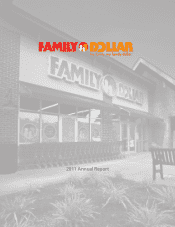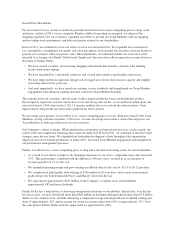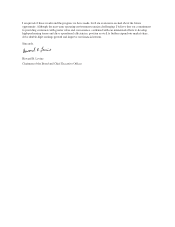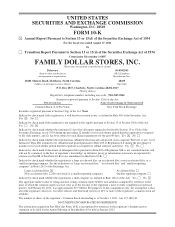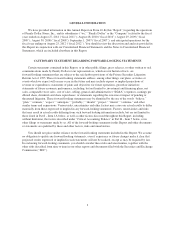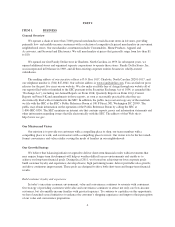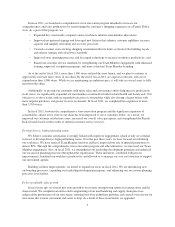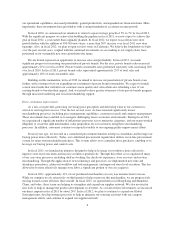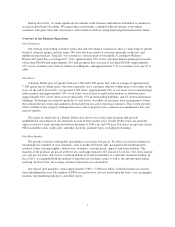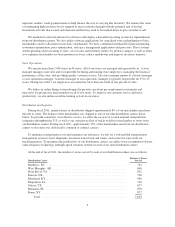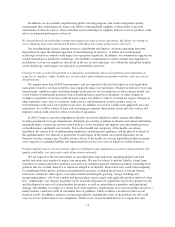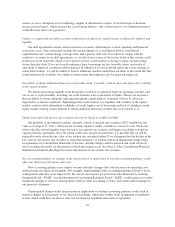Family Dollar 2011 Annual Report Download - page 11
Download and view the complete annual report
Please find page 11 of the 2011 Family Dollar annual report below. You can navigate through the pages in the report by either clicking on the pages listed below, or by using the keyword search tool below to find specific information within the annual report.During fiscal 2011, we made significant investments in the business and built the foundation to continue to
accelerate growth into the future. We expect these investments, combined with our strategy of providing
customers with great value and convenience, will continue to deliver strong financial performance in the future.
Overview of our Business Operations
Our Customers
Our strategy of providing customers with value and convenience continues to attract a wide range of income
brackets, ethnicity groups, and life stages. We serve the basic needs of customers primarily in the low- and
middle-income brackets. Typically, our customer is a female head-of-household. According to Nielsen’s
Homescan®panel data as of August 27, 2011, approximately 54% of our customers had an annual gross income
of less than $40,000 and approximately 24% had an annual gross income of less than $20,000. Approximately
35% of our customers were African American or Hispanic, and approximately 71% of customers were age 45 or
older.
Our Stores
A Family Dollar store is typically between 7,500 and 9,500 square feet, with an average of approximately
7,100 square feet of selling space. Our stores generally serve customers who live within three to five miles of the
store. At the end of fiscal 2011, we operated 7,023 stores. Approximately 23% of our stores were located in large
urban markets and approximately 20% of our stores were located in small urban markets or suburban areas.
Approximately 63% of our stores were in strip malls, 35% in freestanding buildings, and 2% were in downtown
buildings. To manage our extensive portfolio of store leases, we utilize an electronic lease management system
that contains the key terms and conditions abstracted from our active store lease contracts. This system provides
better visibility to key property management issues such as property taxes, common area maintenance fees and
renewal options.
The relatively small size of a Family Dollar store allows us to select store locations that provide
neighborhood convenience to our customers in each of these market areas. Family Dollar stores are generally
open seven days a week and operate between the hours of 8:00 a.m. and 9:00 p.m. Our stores accept cash, checks,
PIN-based debit cards, credit cards, and other electronic payment types, including food stamps.
Our Merchandise
We provide customers with quality merchandise at everyday low prices. We offer a focused assortment of
merchandise in a number of core categories, such as health and beauty aids, packaged food and refrigerated
products, home cleaning supplies, housewares, stationery, seasonal goods, apparel, and home fashions. The
majority of the products are priced at $10 or less, with approximately 22% priced at $1 or less. Our stores operate
on a self-service basis, and our low overhead enables us to sell merchandise at a relatively moderate markup. In
fiscal 2011, we expanded both the number of trips that our customers make as well as the amount spent during
each trip. In fiscal 2011, the average customer transaction was around $10.
Our typical store generally carries approximately 5,000 – 5,500 basic SKUs, with fluctuations in seasonal
items throughout the year. The number of SKUs in a given store can vary based upon the store’s size, geographic
location, merchandising initiatives, and other factors.
7

